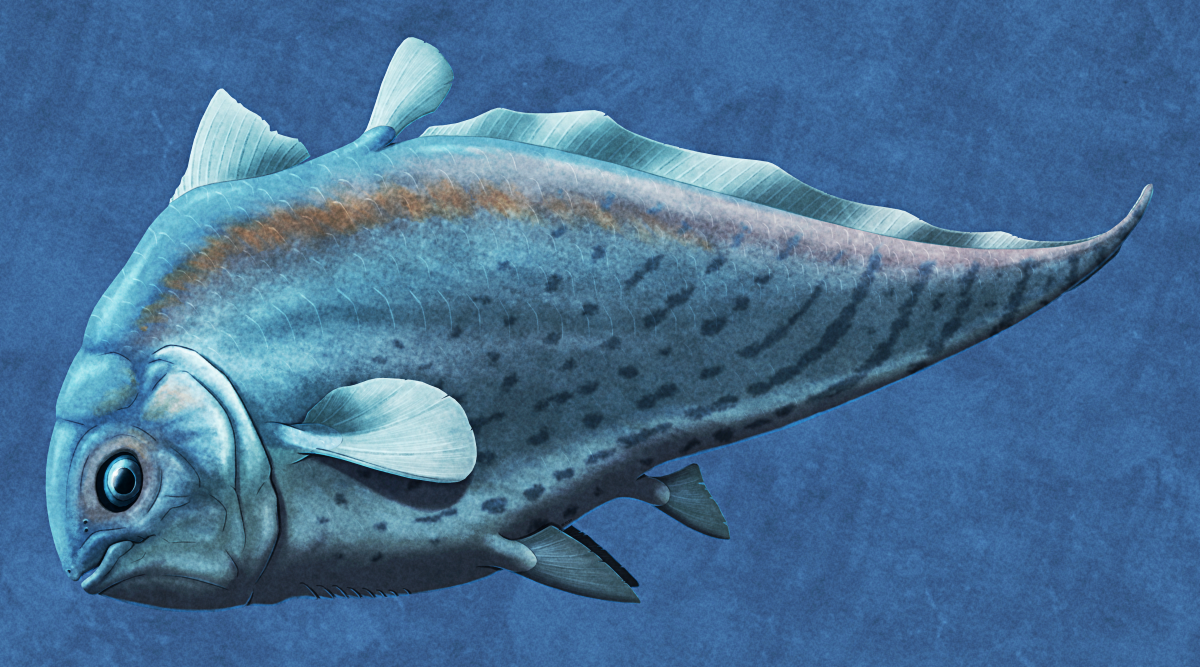Allenypterus montanus was an unusual early coelacanth that lived during the late Carboniferous, around 324 million years ago, in a tropical bay covering what is now central Montana, USA.
Up to about 15cm long (~6″), its tapering tadpole-like body plan somewhat resembled that of modern knifefishes and featherbacks, with the top part of its tail fin highly elongated into a ribbon-like shape and the rest of its tail fins being vestigial. The distinctive humped shape of its back was also much more pronounced in larger, more mature individuals.
It was probably a fairly slow swimmer, and preserved gut contents suggest it mainly ate small soft-bodied prey.
Its closest known relative seems to have been the eel-like Holopterygius – but since around 60 million years and different continents separated them both, this suggests the existence of a whole ghost lineage of other tapering coelacanths yet to be discovered.
References:
- Friedman, Matt, and Michael I. Coates. “A newly recognized fossil coelacanth highlights the early morphological diversification of the clade.” Proceedings of the Royal Society B: Biological Sciences 273.1583 (2006): 245-250. https://doi.org/10.1098%2Frspb.2005.3316
- Lund, Richard, and Wendy Lund. “New genera and species of coelacanths from the Bear Gulch Limestone (Lower Carboniferous) of Montana (USA).” Geobios 17.2 (1984): 237-244. https://www.academia.edu/download/66985268/s0016-6995_2884_2980145-x20210504-8876-dzniic.pdf
- Lund, Wendy L., Richard Lund, and G. Klein. “Coelacanth feeding mechanisms and ecology of the Bear Gulch coelacanths.” Compte Rendus du Neuvième Congrès International sur la Stratigraphie et la Géologie du Carbonifère 5 (1985): 492-500. https://www.researchgate.net/publication/285577607_Coelacanth_Feeding_Mechanisms_and_Ecolqgy_of_the_Bear_Gulch_Coelacanths
- Toriño, Pablo, Matías Soto, and Daniel Perea. “A comprehensive phylogenetic analysis of coelacanth fishes (Sarcopterygii, Actinistia) with comments on the composition of the Mawsoniidae and Latimeriidae: Evaluating old and new methodological challenges and constraints.” Historical Biology 33.12 (2021): 3423-3443. https://doi.org/10.1080/08912963.2020.1867982

